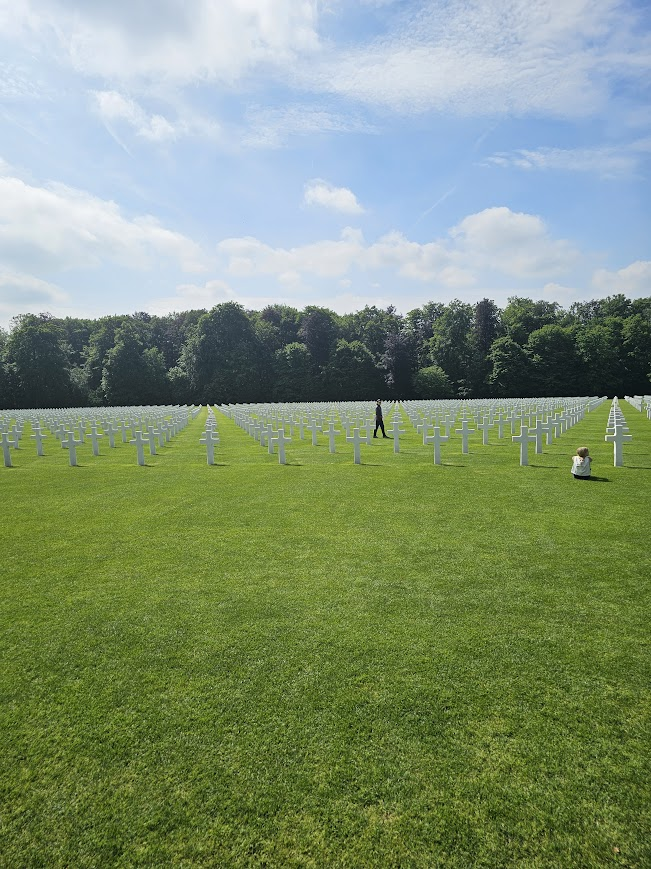Selcouth Chronicles Week 22
Hello family and friends! Welcome to week 22 of the Selcouth Chronicles.
Week 22: June 2 - June 8
June 2: Bacharach ->🚗 Trier 🚗 -> Luxembourg`
June 4: Luxembourg City -> 🚗Echternach🚗 -> Bad Neuenahr-Ahrweiler
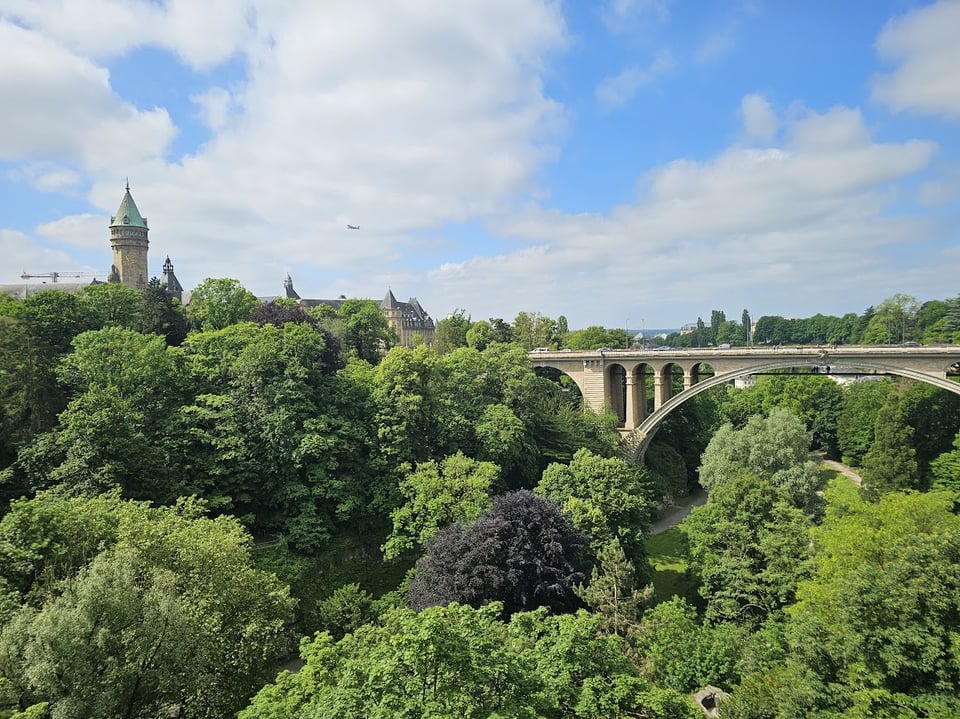
GERMANY AND LUXEMBOURG
Highlights: Trier’s UNESCO sites, walking tour of Luxembourg City, Luxembourg American Cemetery and Memorial, Echternach, exploring Ahrweiler, toboggan run, the horses at our Airbnb, white pinot noir
Abby:
This week we had lots of fun in Germany, Luxembourg, and back to Germany.
Starting off the week with Sunday, we left Bacharach in our rental car and headed to Luxembourg. Luxembourg is a country so small that it looks quite like a US state. Compared to Germany, it’s a bread crumb. On the way, we took a stop at a town called Trier for an afternoon. Trier is known for its nine UNESCO World Heritage Sites, which made James groan. (More on that in his section!) Apparently it was UNESCO World Heritage Day, so we got in free for all of the sites! 😂 Trier was a very cute little town to walk around in. One of the UNESCO Sites that we saw was the Roman Amphitheater, where, back when this area was part of the Roman Empire, they would host gladiator duels. For UNESCO Day, they were hosting little plays that look like the duels in the center. They’re free, so we decided to go and try to see one. Unfortunately, we were about five minutes late and by the time we got there they were already ending the last fake duel. At least it was a nice amphitheater! After our afternoon at Trier, we headed back to the car to continue our drive to Luxembourg.
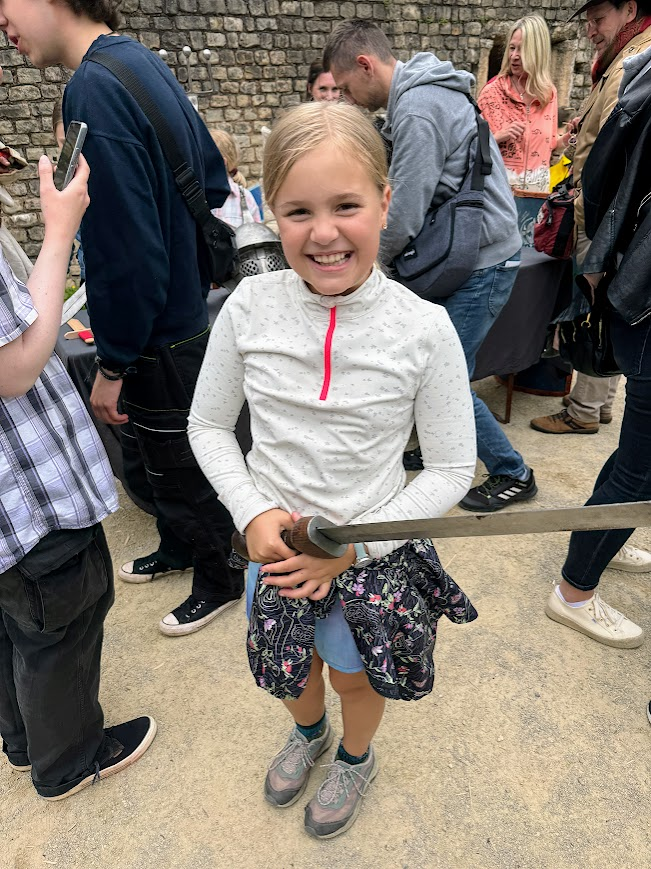
After settling in, we woke up on Monday to catch our guided tour of Luxembourg city. We took a short walk to get to the meeting point, where we started the tour. We had a nice tour of the city, which included the Cathedrale Notre-Dame, the Grand Ducal Palace, the Plaza d’Armes, and more. Afterwards, we tried some traditional Luxembourgish food for lunch. Dad had to head back to Airbnb to work, so Mom, James, and I met up with a new friend from the tour at the Bock Casemates. The Casemates are the old Luxembourg fortifications and barracks, as well as WWII bomb shelters. We spent a while wandering (and getting lost) around the cold and winding caves, plus admiring the beautiful views of the valley below. Then we went across the Pont Adolphe bridge, where we said goodbye to our friend and headed back to the house.
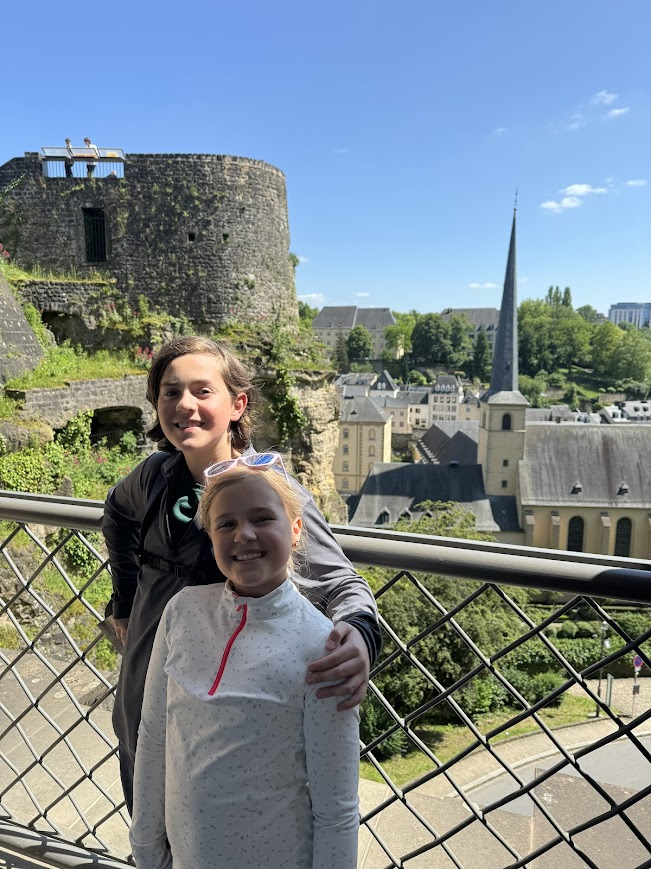
On Tuesday, we had another travel day to get from Luxembourg back into Germany. On the way, we stopped at the Luxembourg American Cemetery and Memorial. It was built for American soldiers who died fighting in Europe through WWI and WWII. It was a touching memorial, and was in a very beautiful area. Next, we stopped for lunch at a little town at the border of Luxembourg and Germany called Echternach. We took a picture of me and James on different sides of the bridge that separates the two countries. We had a nice lunch (plus gelato) and got back in the car. When we got to the Airbnb, I went to have my very last video chat with my class before the end of the school year. 🥲 the very kind host let us ride the horses that she owned. Their names were Bento, Ronaldo, Figo, and Isebio. After a very fun evening, we headed to bed for some good rest.
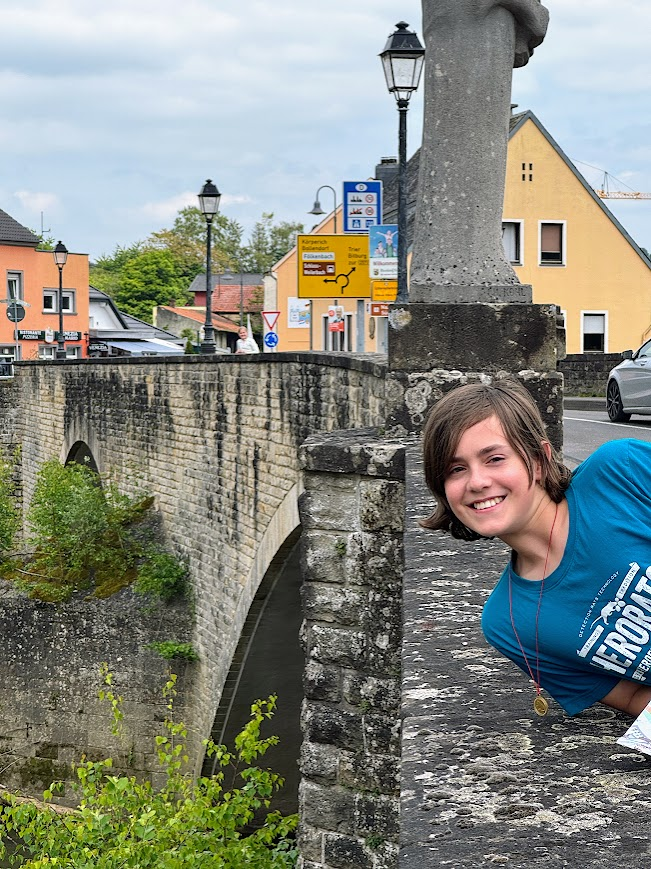
Wednesday was a calm day. We started it with a pleasant walk around town and up the hills a bit, but unfortunately the rain started pounding on us so we had to head back to the house. Thursday was more eventful. We got up in the morning to go to a toboggan run, which was so exciting. It was so cool to be flying in a little cart down a windy half tube. It doesn’t sound like much, but it is really very fun. After a great morning, we headed to town to redo the rain splattered Wednesday. We had a very good lunch at a cafe and finished the day with another little walk around.
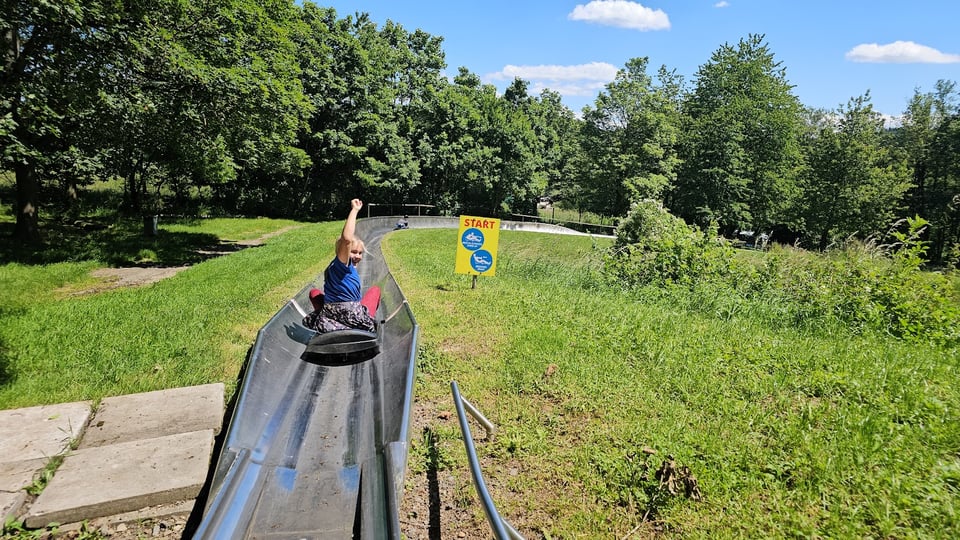
On Friday morning, we said hi to the horses in the field and fed them some carrots. Later in the day, we took yet another walk through Ahrwieler. Our plan was to go biking through the town, but there was construction, so we didn’t have access to the bike rental place(s). 😬 Afterwards, we headed back to the house. It was quite an eventful evening for me since I finished my math book! Also, it was the last day of school for Lietz Elementary, so that was cool since I finished with them! To celebrate, we went to ride the horses, and watched a movie at night.
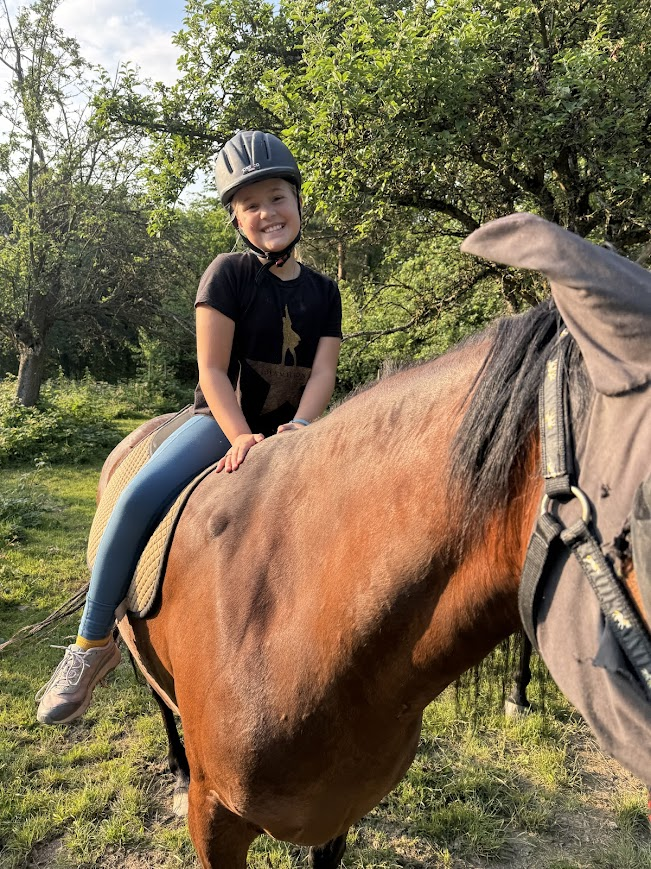
We had an awesome day on Saturday. We headed to a nearby ropes course, which James and I had been waiting to do all week. That was loads of fun. There were tons of super exciting zip lines, some crashed you into ropes, and some swung you downwards so that you’d get freaked out before it catches you. There were also many challenging obstacles, and even a two person course! It was a nice change, we got to have some fun adventure time in the forest. I hope we can do more things like that in the future! When we got home, we packed and did some of this newsletter.
I am excited to continue our journey through Europe. I can’t believe that we only have about two months left! I can’t wait to see you all back home. 😘
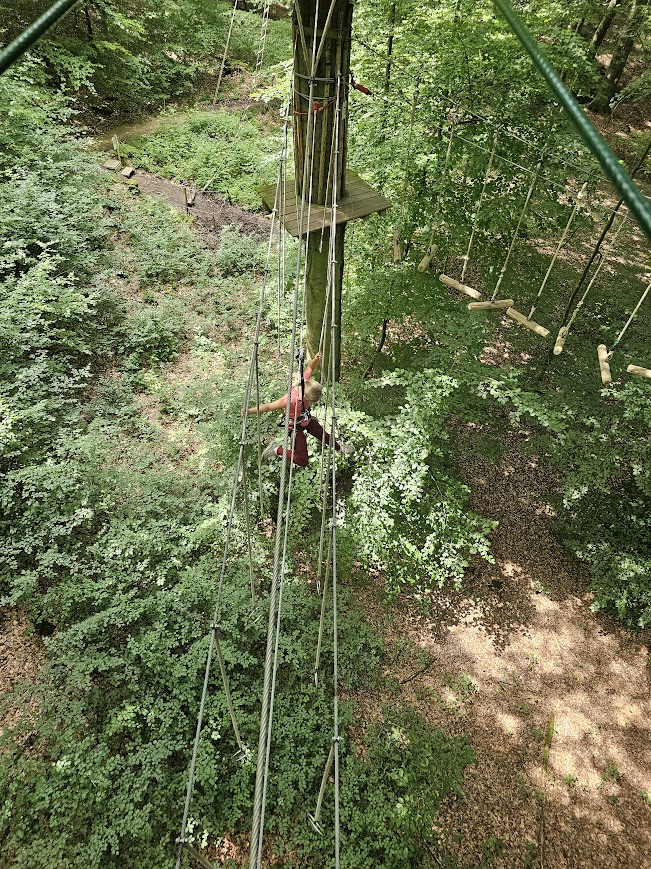
Sean:
One of the most interesting dynamics of this trip has been the changes made on the fly. As we move from place to place, learning about the area and digging into the map, we decide to make a change to the itinerary. That was the case leading up to this week, as we kept looking at where to go along the Rhine Valley, constantly looking west and trying to decide if we should venture out towards France. Here we realized, a short 2 to 3 hour drive away, was one of the smallest countries in the world, Luxembourg. We decided to head over to see what it was about.
Being such a small country, Luxembourg has the interesting case of the capital city being named Luxembourg as well, so we stayed in Luxembourg, Luxembourg. Our only full day there we decided to do a guided tour. We stopped at a nice cafe for breakfast and then walked up the street. I have to admit that I can’t think of a place that turned my opinion around any faster than this city. The initial walk was through a lot of construction, and what felt like a very unexceptional place. But then we came to an old bridge that had a pedestrian bridge underneath. It was beautiful and allowed us to walk over a lush green valley that was truly beautiful.
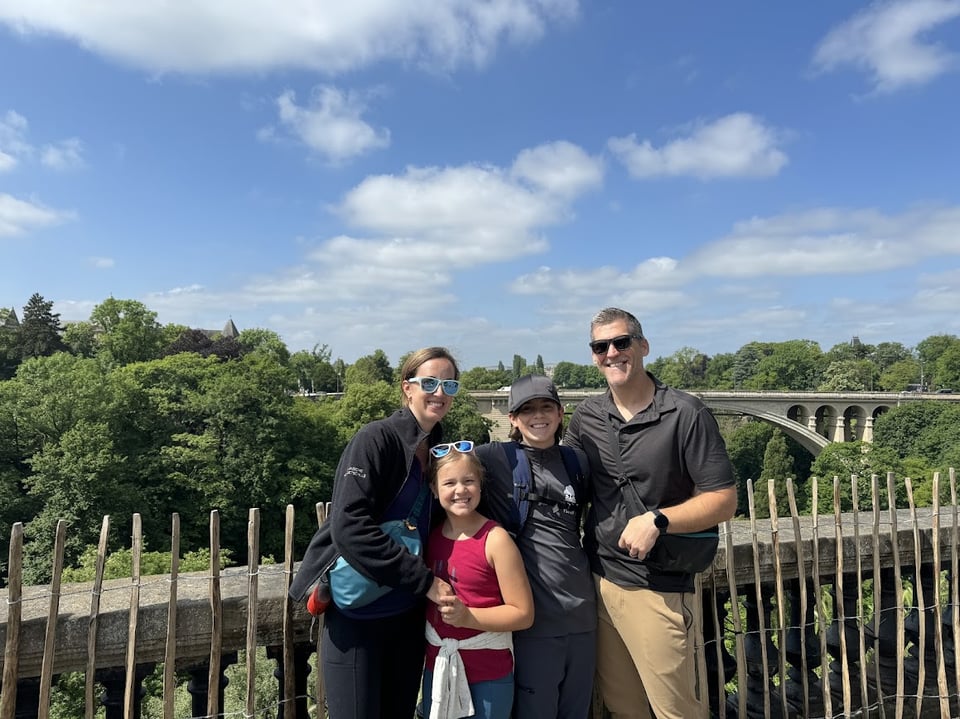
Exiting the bridge we came to the old town and made our way to the Golden Lady statue where we were to meet the guide. This statue is also known as the Monument of Remembrance, and our guide told us that it was first erected after the first world war as a reminder of the independence won despite occupation by Germany. When Germany invaded again in World War II, they pulled the monument down and it was lost for many years. Upon being rediscovered, it was reinstalled, but its head is now bent down in an unnatural position. They decided to leave it as a reminder, and I love that. Originally, the statue would have been looking out over the city, but now it appears to be looking down at the visitors admiring the monument.
Leaving the monument, our guide walked us through all of the old town. We saw the cathedral and its crypt, and a fascinating clock tower that still has a cannonball wedged in it from a French siege. The most memorable part was the old fortress where you can see across a large part of the city along with trees and the river. It was a beautiful place that I could imagine sitting quietly and enjoying on a nice spring day. Caitlin and the kids were able to go through the Bock Casemates after lunch while I went back to work, but even missing that, it was a great day and wonderful city to walk around.
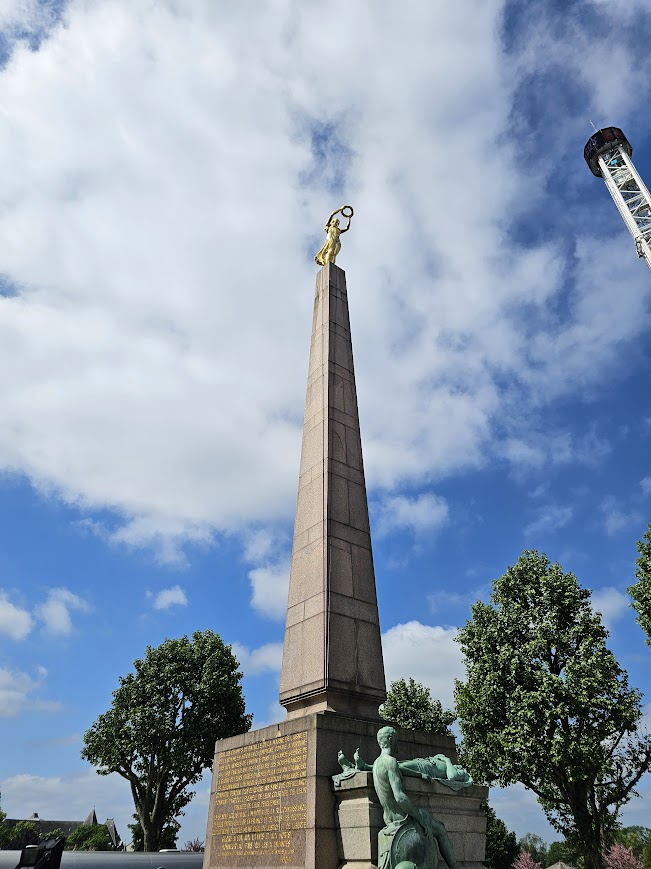
The next day we decided to go to the American cemetery just outside of town. It was begun during WWI, but expanded significantly after WWII. It turns out that Luxembourg was the American headquarters for General Patton, and was where they were frantically working during the Battle of the Bulge. In fact, at the cemetery there was a lot of information about the battle and how it played out and led to the final Allied victory. While we were walking around the first section with the displays about the battle, taps began playing. We stopped and waited quietly, and it was very powerful. Continuing through the actual cemetery, passing by General Patton’s grave, and finding quite a few sets of brothers and the only woman buried there. It was a great stop and allowed us to think about the sacrifice made by so many to bring freedom back to the area.
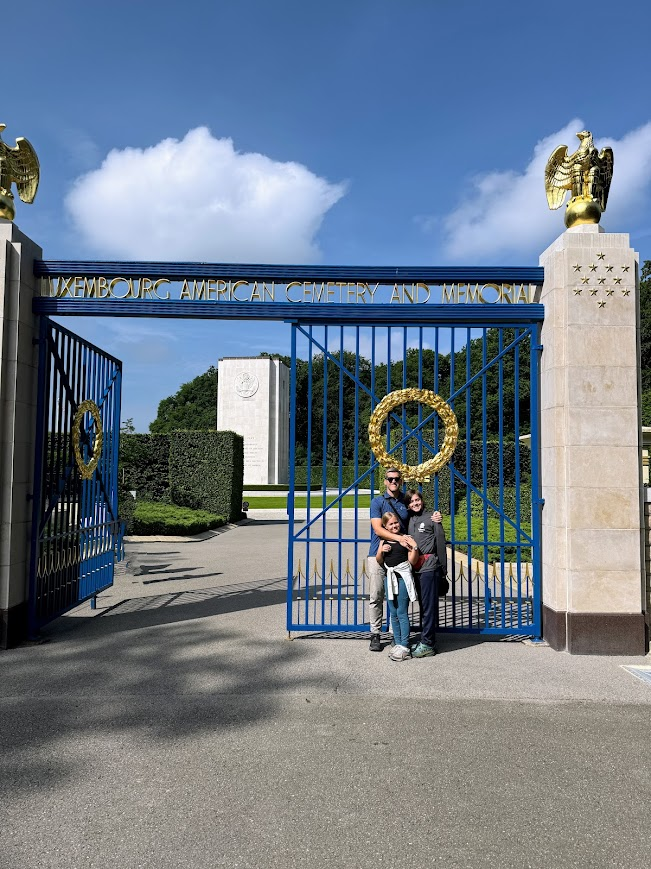
Departing from the town, we made one final stop to burn time in Ecternach, the oldest town in Luxembourg. It was a short stop to burn time until our next Airbnb check in time opened. As we drove over the bridge crossing back to Germany, we all agreed that Luxembourg was a great diversion and we loved getting to add this country to our travel list.
James:
UNESCO World Heritage sites have become a running joke in our family. There are so many of them that it has become ridiculous - it feels like every time you turn a corner, you find another. In Trier alone we found 9! I originally thought that there were too many to make me take UNESCO seriously, but after some digging around, I found out that it's actually very important. Quite the surprise!
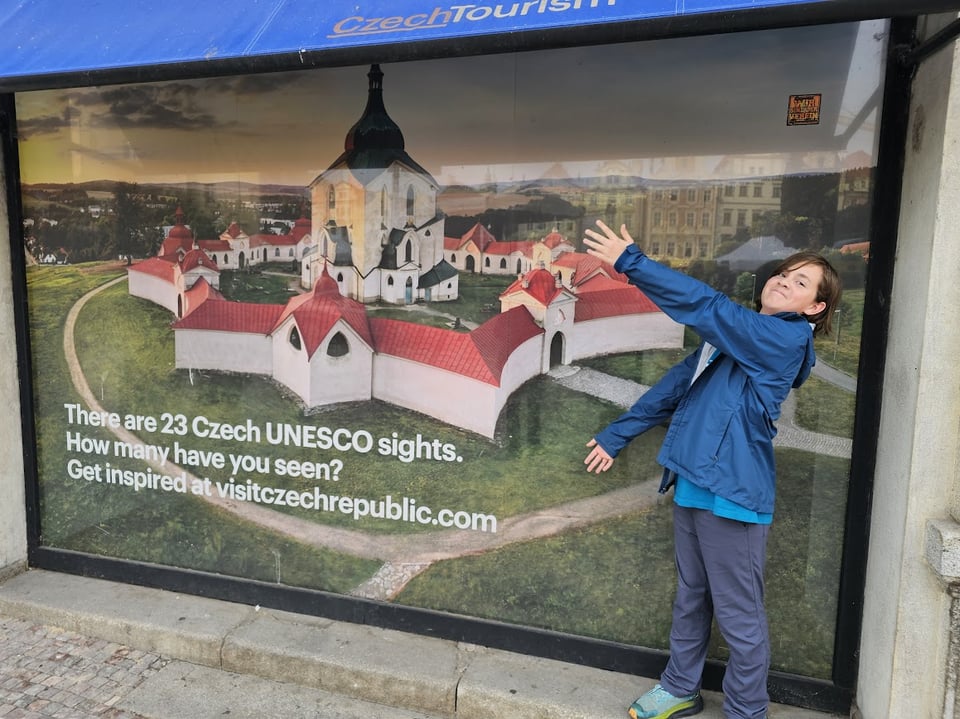
UNESCO stands for United Nations Educational, Scientific, and Cultural Organization. It was founded in 1945 as a response to the amount of important sites that had been destroyed during WW2. As restoration continued, they realized they would need to expand their efforts. The World Heritage branch was created in 1972 and was tasked with identifying places of outstanding universal value to humanity. They split the world into five different regions and selected representatives from each. To be nominated, countries must put together a proposal explaining why their site deserves to be on the list. Once the proposal reaches UNESCO, they send a group of experts to see if the proposal’s statements are accurate and if the site meets its requirements. If it does, the member states make the final decision via a vote. If the place is deemed worthy, it earns a spot on the prestigious list.
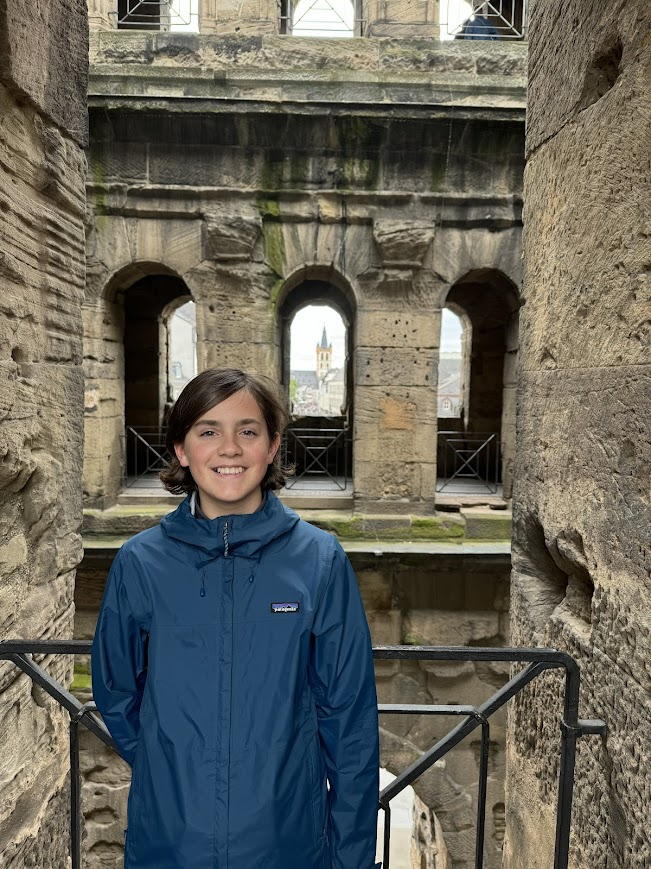
Becoming a World Heritage site raises awareness for the place, and when a new one is added its situation begins to change. First and foremost, countries must agree to preserve and protect their World Heritage sites, so they must support conservation efforts in the area or risk losing their spot on the list. When people hear about UNESCO sites, they may be more likely to be interested in traveling there. The tourist industry begins to gain steam around the site, bringing in money. When people notice that, it encourages others to invest in the area, which can help the local economy. At its best, tourism can help build understanding and connections among different cultures.
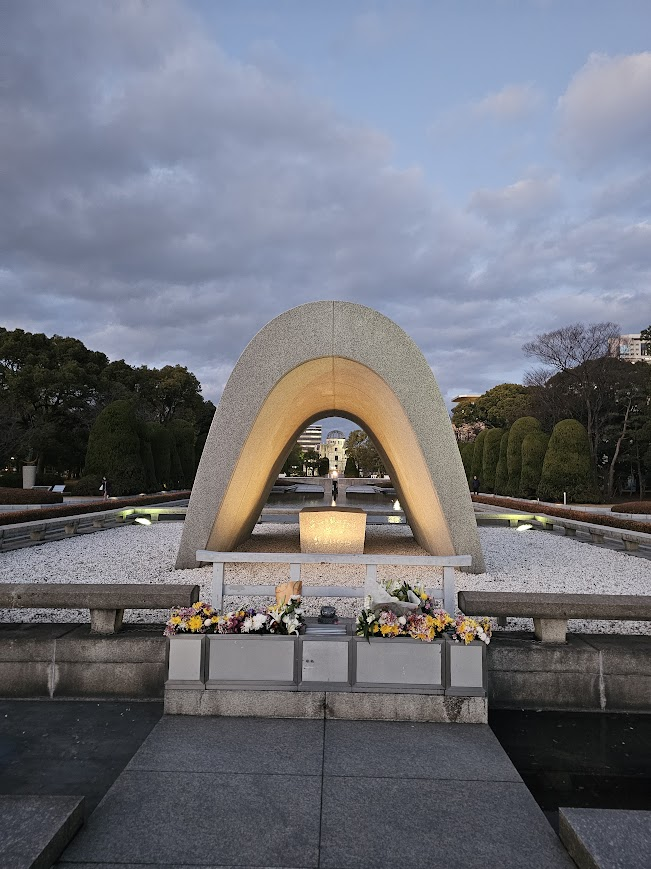
However, becoming a UNESCO World Heritage site isn't all good. While this does undeniably help in the ways of finances, disrespectful tourists can do serious damage with things like name-carving, graffiti, and litter. Even if they have strict rules against those things and enforce them well, the sheer amount of people walking through the landscape can damage the site. For example, whenever you touch a stone, your hand leaves some of its oils on it and weakens it slightly wherever your hand made contact. Now imagine thousands of people doing the same thing. It can do irreparable damage.
Thanks to UNESCO, many important places are being kept safe for future generations. Currently, about 1,200 places around the world are protected, and more are being added all the time. While I may still laughingly roll my eyes when I see the UNESCO designation, I recognize that it does a lot for the places it lists, and on our trip some of our favorite spots have been UNESCO sites. I’m grateful that these spots exist; they are experiences like no other and I’m glad they are being protected with the help of UNESCO.
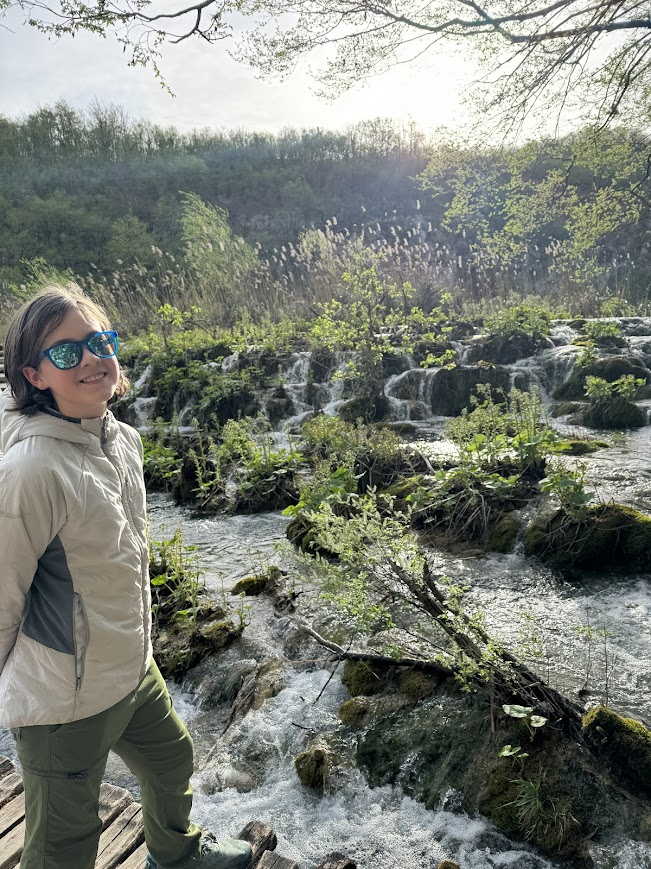
Caitlin:
When we’re planning where to stay, it generally involves a lot of research. Even when I know what city we want to visit, I spend time looking up what parts we most want to see, which neighborhoods are the best for access to our top sites, whether we need advance tickets to anything, etc. This week, we decided to take a break from our usual trip style and go somewhere with the sole purpose of not doing anything in particular. We wanted a few more days in Germany after our hop over to Luxembourg, but out of the usual tourist routes. We’ve been seeing a lot of amazing cities but we felt like everyone could use a few unstructured days to decompress.
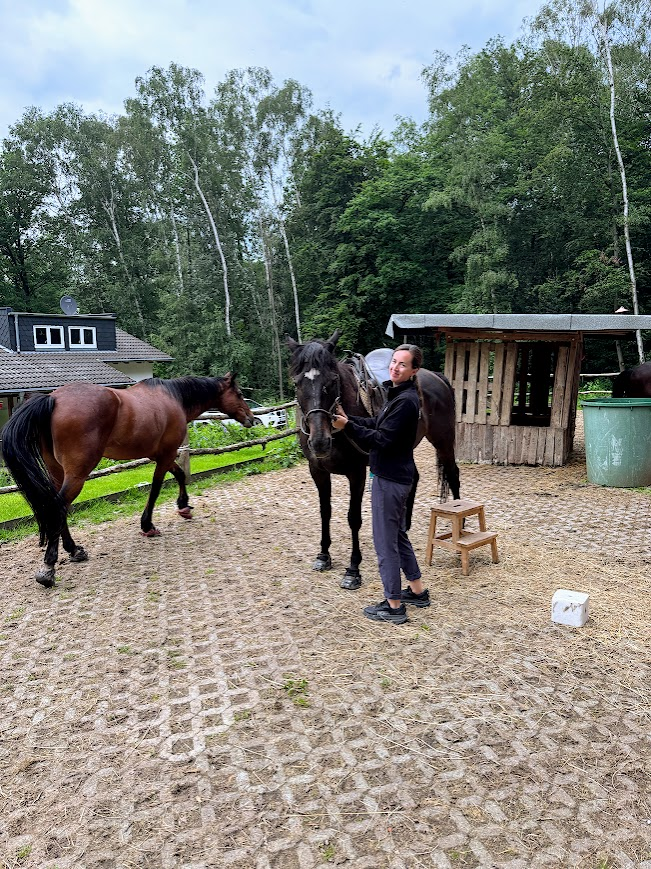
For the first time, my advance searches consisted mostly of looking for houses near nature, without any real caring of the towns they were near, and the final few options were all pretty far away from each other. We ended up choosing a home in Bad Neuenahr-Ahrweiler, about 30 minutes inland from the Rhine River. This house was quiet and had horses, dogs, and cats on the property, and that was enough to convince us that the kids would have a great time. When we arrived, our host asked if we knew about the flooding a few years ago, which of course had not turned up in our complete lack of research. It was quite a story.
The town (technically a combination of two: Bad Neuenahr and Ahrweiler) is situated in the Ahr Valley, along the banks of the Ahr river, surrounded by lovely hills covered in trees, grasses, and grapevines. People have lived in Ahrweiler since at least 500 BCE, and the town even has a museum showcasing the ruins of a Roman estate from the 2nd-3rd century. Recently, the region was a popular destination for wine lovers. Then in 2021, the region was hit by a devastating storm that also affected Switzerland, Belgium, and the Netherlands. Ahrweiler was especially hard-hit, at one point reporting 1,300 people missing, and a death toll that eventually reached well over 100.
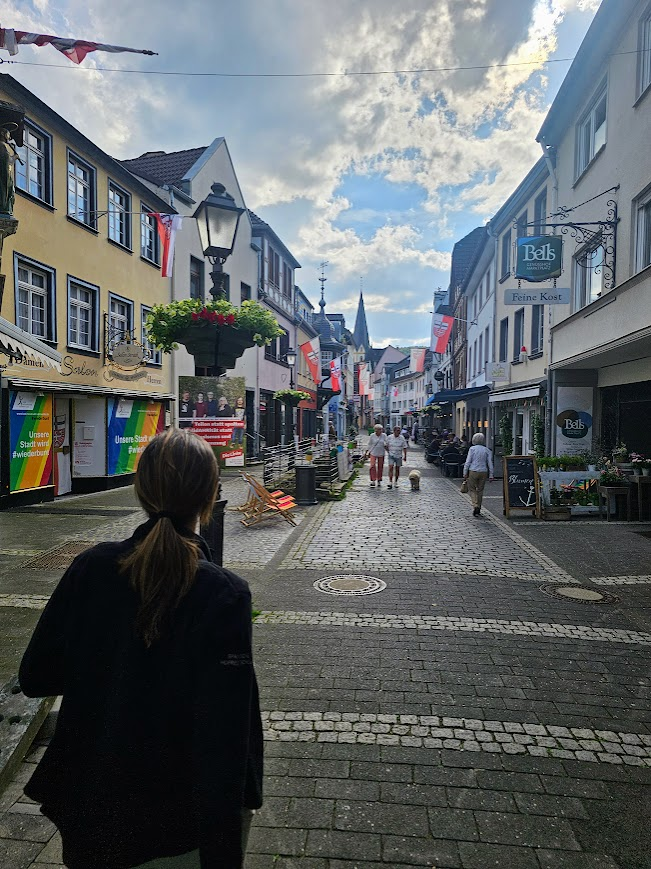
Visiting Ahrweiler, it’s obvious that reconstruction is still very much underway. The historic stone bridges that were washed away still have their temporary metal replacements. Many buildings and wineries were destroyed, and construction is everywhere as businesses struggle to rebuild and reopen. I chatted with one store owner who had just reopened her store the previous week, after three long years of waiting and hoping. Many others are still awaiting their turns as reconstruction projects grind along.
Despite the trauma the town has suffered, we quite loved being there. Ahrweiler retains its character and charm, and civic pride is on full display, as every open restaurant and retailer prominently displays their “We AHR open!” signs in windows and on shelves. It was impressed upon us the gratitude that the town has for each and every person who visits as they continue trying to rebuild their tourist industry. Though it may have been hobbled by the floods, the town is warm and friendly, and we were happy to see small tour groups wandering through the main square in addition to the locals. It was much more rewarding to spend tourist dollars there - where they make a difference - versus many of the more well-known European destinations where the most popular sites are packed with visitors. We feel so lucky that we stumbled onto this part of the country; it’s a happy reminder of the joys of traveling off the beaten path.
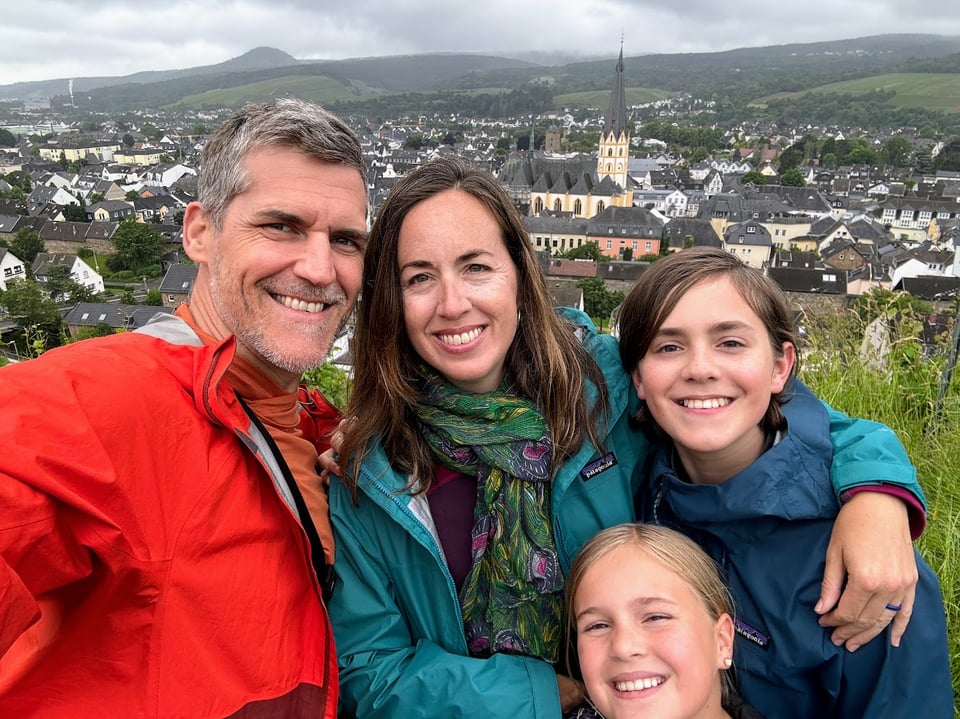
See you next week!
Sean, Caitlin, James, and Abby
Catching up? Read week 1, 2, 3, 4, 5, 6, 7, 8, 9, 10, 11, 12, 13, 14, 15, 16, 17, 18, 19, 20, or 21.
